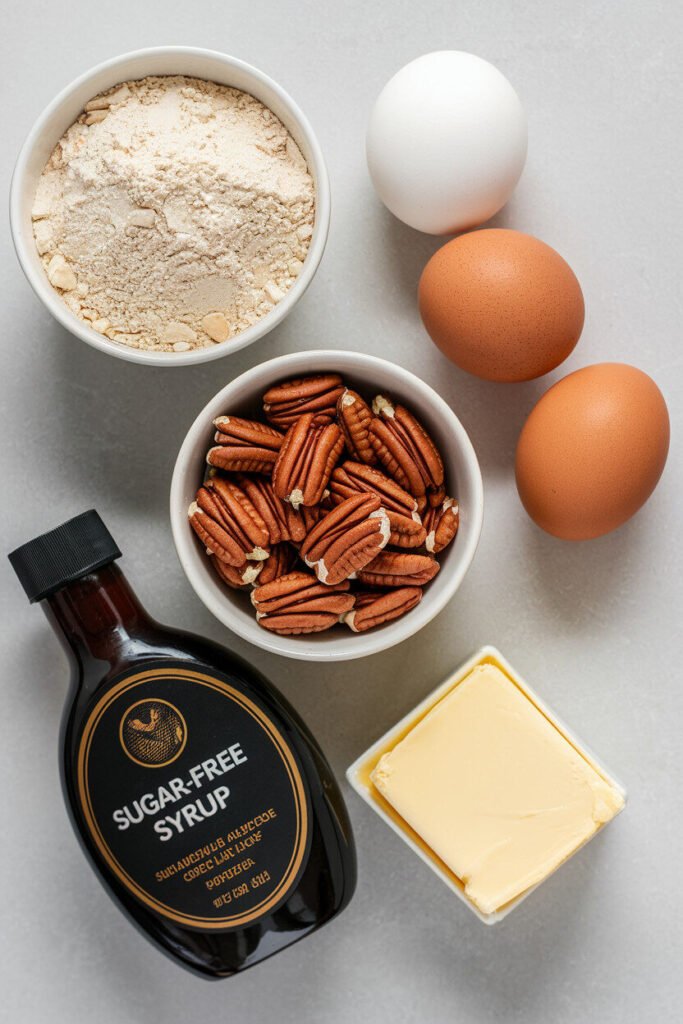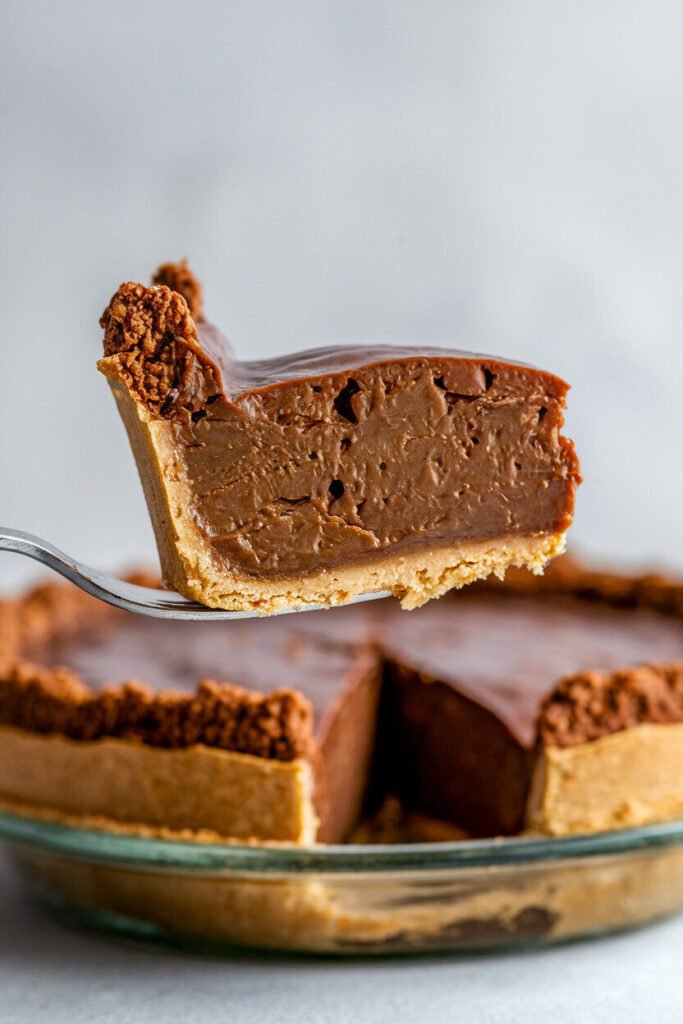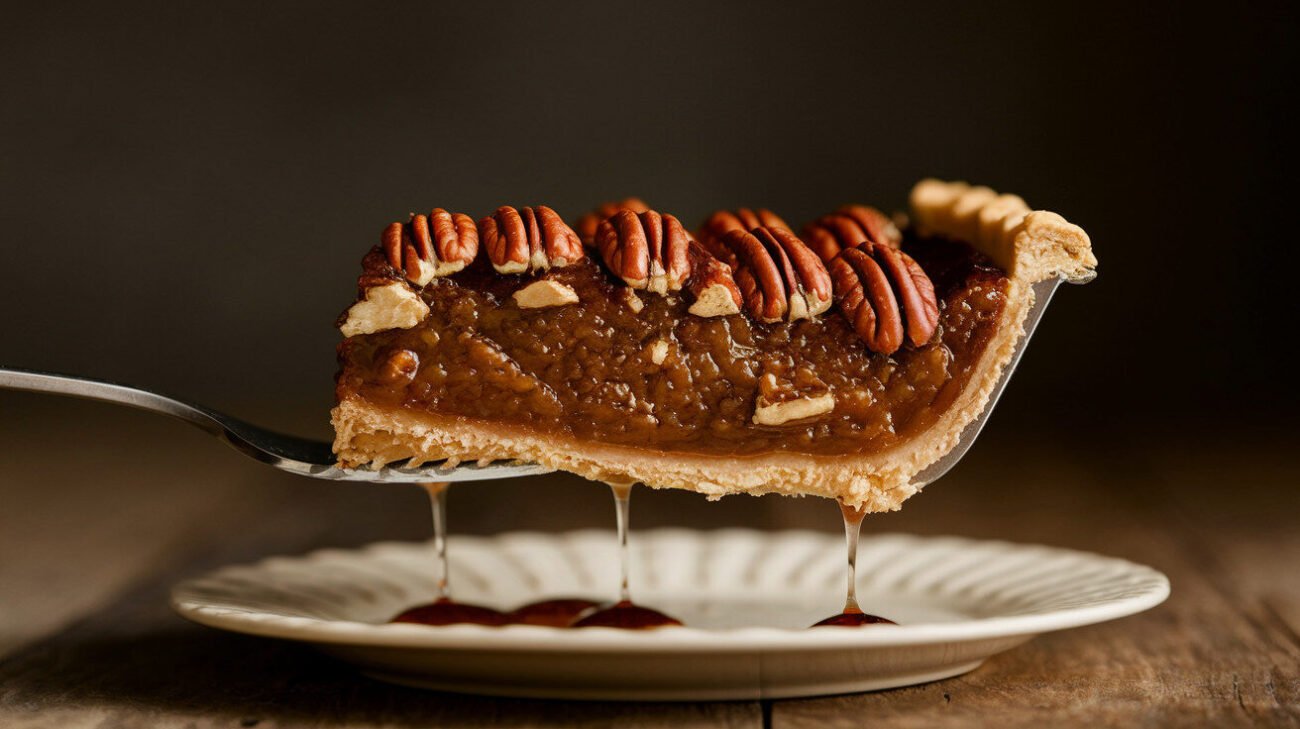I’ve tested more keto pecan pie recipes than I care to admit. Most are disappointing—gritty crusts, weeping fillings, or that distinct artificial sweetener aftertaste that screams “diet food.” After years of recipe development for clients with dietary restrictions, I’ve landed on a formula that finally delivers what others promise: that classic, gooey, deeply caramelized pecan pie experience without the sugar. The secret isn’t one magic ingredient, but a series of precise techniques and understanding the why behind each component. This isn’t an approximation; it’s the real deal, just built with different materials.
Why This Keto Pecan Pie Recipe is Different
Most failed keto pies stem from two fundamental flaws: treating an almond flour crust like a wheat flour one, and trying to make a 1:1 sugar substitute for corn syrup. It doesn’t work that way. The chemistry is completely different. This recipe works because it respects the unique properties of low-carb ingredients. The crust is designed for structural integrity and a flavor that complements the filling, not fights it. The filling leverages the Maillard reaction and protein coagulation in a way that mimics the setting power of sugar. It’s a different path to the same destination.
The Secret to a Truly Convincing Keto Pie Crust
The biggest mistake? Using a generic almond flour pie crust recipe. They’re often too delicate, too greasy, or too bland. This crust is engineered specifically for the wet, heavy nature of pecan pie filling. The key is a higher ratio of butter to flour and the inclusion of a single egg yolk. The proteins in the yolk provide crucial structure and help the crust brown beautifully, combating the pale, undercooked look that plagues so many gluten-free pies. It’s a sturdy vessel that can hold its own.
Mastering the Gooey Filling Without Corn Syrup or Sugar
Traditional pecan pie relies on the hyper-saturation of sugar in corn syrup to set into that iconic firm-yet-gooey texture. We can’t do that. So we cheat. We use a combination of gentle heat, egg protein denaturation, and the unique properties of sugar-free syrups. The goal isn’t to boil the filling into submission, but to coax it into setting through slow, even cooking. The choice of sweetener is critical here—some simply won’t caramelize or will recrystallize into a gritty mess. This method ensures a smooth, cohesive slice every time.
Crafting the Perfect Almond Flour Pie Crust
Ingredients for the Crust:
- 1 ½ cups (150g) blanched almond flour (not almond meal)
- ¼ cup (28g) coconut flour
- 3 tablespoons (36g) granulated erythritol
- ½ teaspoon xanthan gum (this is non-negotiable for structure)
- ¼ teaspoon fine sea salt
- 5 tablespoons (70g) cold unsalted butter, cubed
- 1 large egg yolk
- ½ teaspoon apple cider vinegar

Selecting the Right Almond Flour for the Job
You absolutely must use blanched almond flour, not almond meal. Almond meal includes the brown skins, which add moisture, a grittier texture, and a more pronounced flavor that can overpower the delicate pie. I’ve tested every major brand, and while Bob’s Red Mill is widely available and consistent, I actually prefer a finer-ground brand like Wellbee’s or King Arthur for an even more shortbread-like crumb. The particle size matters—finer flour leads to a more cohesive, less grainy crust.
The Critical Role of Butter and Egg in Binding
Unlike wheat flour, almond flour contains no gluten to form a structural network. So we build structure with fat and protein. The cold butter is cut in until the mixture resembles coarse peas. When the crust bakes, the melting butter creates steam pockets, leading to flakiness. The egg yolk, however, is the real workhorse. Its proteins and emulsifiers bind the fats and dry ingredients into a pliable dough that doesn’t crumble when rolled. The vinegar isn’t for flavor; it inhibits the development of tough protein strands, keeping the crust tender.
Blind-Baking for a Crisp, Not Soggy, Bottom
This is the step everyone wants to skip. Don’t. A wet filling poured into an unbaked almond flour crust is a recipe for a soggy, undercooked bottom. You must pre-bake (blind-bake) it. I line the chilled crust with parchment paper and fill it with pie weights or, even better, sugar-free chocolate chips (they don’t burn and you can reuse them). Bake at 350°F (175°C) for 12-15 minutes until the edges are just golden. This creates a protective barrier that the filling can’t soak through.
The Art of the Sugar-Free Pecan Filling
Ingredients for the Filling:
- 3 large eggs
- 1 cup (240ml) sugar-free maple-flavored syrup (I use ChocZero or Lakanto)
- ½ cup (100g) granulated monk fruit-erythritol blend
- 4 tablespoons (56g) unsalted butter, melted
- 1 teaspoon vanilla extract
- 1 teaspoon blackstrap molasses (optional, but crucial for depth)
- ½ teaspoon fine sea salt
- 2 cups (200g) raw pecan halves
Choosing Your Keto Sweetener: A Flavor and Texture Guide
This is the most important decision you’ll make. Allulose is the gold standard for this application. Why? Because it caramelizes like real sugar. Brown sugar-style monk fruit/erythritol blends add the right molasses notes, but erythritol alone can crystallize and create a cooling sensation. I use a blend: allulose-based syrup for the liquid base and a granulated monk fruit blend for the bulk sweetness. This combo avoids the crystallization issue and provides the most authentic flavor profile. Stevia drops can end up bitter here, so I generally avoid them.
Achieving the Classic Gooey Texture with Sugar-Free Syrups
The texture comes down to your syrup choice. Many sugar-free syrups are thin and watery. You need a thick, viscous one. The syrup, when heated with the eggs and butter, forms an emulsion that thickens as the eggs cook. You’re not looking for a rolling boil; you’re gently heating the mixture until it’s hot to the touch and slightly thickened. This step, called “tempering,” is what prevents the eggs from scrambling when you add the hot liquid to them. It’s the foundation of that smooth, custardy set.
The Importance of Toasting Your Pecans
Raw pecans are fine. Toasted pecans are transformative. Toasting intensifies their flavor, brings out their natural oils, and makes them fragrant. It’s the difference between a nutty note and a deep, resonant nuttiness that holds its own against the sweet filling. I spread them on a baking sheet and toast at 350°F (175°C) for 6-8 minutes, just until I can smell them. Let them cool before adding to the filling so they don’t cook the eggs on contact.
Assembly, Baking, and Pro Tips for Success
Instructions:
- Make the Crust: In a food processor, pulse the almond flour, coconut flour, erythritol, xanthan gum, and salt. Add the cold butter and pulse until crumbly. Add the egg yolk and vinegar; pulse until the dough clumps together. Press the dough into a 9-inch pie plate, building up the sides. Chill for 30 minutes.
- Blind-Bake: Preheat oven to 350°F (175°C). Line the chilled crust with parchment and fill with pie weights. Bake for 12-15 minutes. Remove weights and parchment and bake for 5 more minutes to dry the bottom. Set aside. Reduce oven to 325°F (163°C).
- Make the Filling: In a medium saucepan, whisk together the sugar-free syrup, granulated sweetener, melted butter, molasses (if using), and salt. Heat over medium-low heat, stirring, until the sweetener dissolves and the mixture is hot but not boiling.
- Temper the Eggs: In a separate bowl, whisk the 3 eggs. Slowly pour the hot syrup mixture into the eggs, whisking constantly. This is the tempering step. Stir in the vanilla.
- Assemble: Arrange the toasted pecans in the blind-baked crust. Gently pour the filling mixture over the top.
- Bake: Place the pie on a baking sheet (to catch any drips) and bake at 325°F (163°C) for 45-55 minutes. The center should be set but still have a slight jiggle, like Jell-O. It will firm up as it cools.

How to Prevent a Soupy Center
The soupy center is usually a result of under-baking or cutting too soon. Almond flour crusts and egg-based fillings need time to set. The pie is done when the edges are firm and the center jiggles as a single unit, not like a liquid. If the crust is browning too quickly, tent the edges with foil. But the real fix? Patience. The pie must cool completely at room temperature, then be refrigerated for at least 4 hours, ideally overnight. This allows the filling to fully set into that perfect sliceable texture.
The Cool-Down: Why Patience is Non-Negotiable
I know it’s hard. The kitchen smells amazing. But cutting into a warm keto pecan pie is a disaster. The structure hasn’t had time to firm up. The proteins in the eggs need to relax and re-form bonds as they cool. Slicing it warm will cause a leaky, messy slice. I always make my pie the day before I need it. The flavor is also better the next day—the ingredients have had time to meld and the sometimes-notes of the sweeteners have mellowed out.
Frequently Asked Questions
What is the best keto sweetener to use for pecan pie?
For the closest flavor and texture, a combination of allulose-based syrup and a brown sugar-style monk fruit/erythritol blend is superior. Allulose prevents crystallization and provides the best caramelization, while the brown sugar blend adds depth. Pure erythritol can be gritty, and stevia can be bitter in the large quantities required for a pie.
Can I make this keto pecan pie ahead of time?
Absolutely, and I highly recommend it. The flavors improve and the texture sets perfectly. You can bake it up to 2 days in advance. Store it covered in the refrigerator. Serve it cold or let it sit at room temperature for 20-30 minutes before serving.
Why is my pie filling watery?
This is almost always due to under-baking or not allowing it to cool and set fully. Ensure your oven temperature is accurate with an oven thermometer. Bake until the center jiggles uniformly. Most importantly, you must let it cool to room temperature and then refrigerate it for several hours. The setting happens as it chills.
How do I store and serve keto pecan pie?
Store it covered in the refrigerator for up to 5 days. I don’t recommend freezing it after it’s baked, as the filling can become watery upon thawing. Serve it cold, at room temperature, or gently warmed. A dollop of sugar-free whipped cream is never a bad idea.
Can I use a different nut for this recipe?
You can, but the flavor and carb count will change. Walnuts are a good substitute, though they have a more bitter edge. Macadamia nuts would be delicious but much richer and higher in fat. Pecans are traditional for a reason—their buttery, sweet profile is ideal.
Is this keto pecan pie freezer-friendly?
The baked and cooled pie can be frozen, but the texture of the filling may suffer slightly upon thawing, potentially becoming a bit watery. If you must freeze it, wrap it tightly in plastic wrap and then foil. Thaw overnight in the refrigerator. For the best experience, I prefer to make it fresh or keep it refrigerated.
